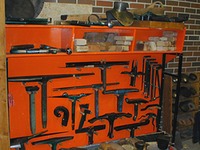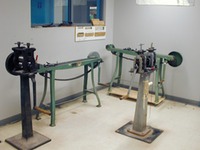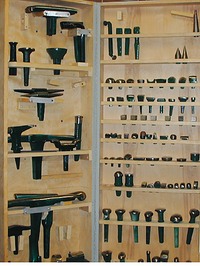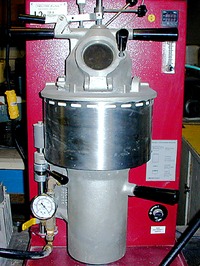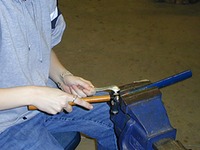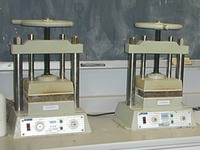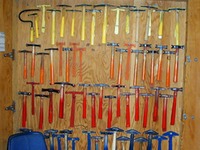Jewellery has been offered at Georgian College since the early 1970’s as an art elective. With the cancellation of some of the full-time programs in the Province of Ontario, there was seen to be a need for a jewellery program, located outside of a major urban centre.
In 1985, discussions started with various individuals in the field including studio craftspeople, those in the commercial jewellery trade and other knowledgeable individuals. An Advisory Committee was formed to develop the program and studio curriculum. All aspects of the program were formulated by this committee and the final proposal was sent to the Ministry of Training, Colleges and Universities for approval, and was accepted in 1988.
In January 1989, the Jewellery and Metals Program commenced with 27 students registered. Very quickly, the students gained success with their work and the reputation of the program was firmly established. In 1995, the curriculum was enhanced and the program redirected to better meet the needs of our students and the jewellery trade.
Program:
·2-Year Diploma
·1-Year Post-Diploma Certificate of Professional Achievement
In the first year, the emphasis is on jewellery skills. In the second year, silversmithing is added along with more advanced jewellery courses. With the completion of all course credits, a diploma is conferred. With the wide variety of skills learned, it is expected that students will have no difficulty securing employment. Graduates can either enter the work force or apply for the post-diploma program.
The post-diploma certificate program, is a one-year intensive study in the major areas of Goldsmithing or Silversmithing. The entire course content is studio related. Many graduates from this level prefer to set up their own business, others secure advanced level jobs that require more skills. Some have applied their credits towards a university degree.
Content
The program is designed to enable graduates to develop a wide variety of skills as well as aesthetic ability. The studio curriculum, such as Stone Setting, Casting, Chainmaking, Design, Gemmology, Metalsmithing, the History of Metal Arts etc., is determined by the faculty in consultation with the Advisory Committee. Some courses are mandated by the College or by the Ministry of Training, Colleges and Universities (such as General Education, Communications, etc.). One recommended General Education course is the History of Jewellery. In order to properly prepare graduates for employment, two business and marketing courses are included in the course of study.
All studio courses, including the related courses in drawing and design, are taught in a practical manner with lectures, demonstrations with inspiration given through slides, videos, etc. Time is allocated for the students to explore the techniques and resolve the assigned projects.
With the combination of full-time and part-time faculty, it is possible to have subtle variations in the content as determined by the expertise of those faculty. In the course, Jewellery and Metals Techniques, for example, the post-diploma students elect the content, and faculty are hired to teach the information. As a result, the specific units of this course may vary, but have included: advanced stone setting, advanced model making, enamelling, engraving, anodizing, knifemaking, reactive metals, stone inlay, lamination and surface embellishments. All of the faculty for this course are practising studio craftspeople, which enables students to work with successful, independent artists.
Studios
The new D.G. Billes Jewellery Studio in the Helen and Arch Brown Centre for Visual Arts, occupies about 8,000 square feet, making it among the largest in North America. The facility is very complete, with separate studios for each of the three years of the program as well as separate casting, lapidary, silversmithing, polishing and machine studios.
Each student has their own work bench and the studios are open for their use every evening as well as on the weekends. Students are expected to spend time beyond the assigned class hours at their studies in order to properly develop their skills.
Skills and Concepts Emphasized
Creative problem solving which uses aesthetic development in association with practical and technical skills is integral to the program. In the studios where technical skills are taught, an emphasis is also placed on using good design skills to assist in resolving the assigned projects.
It is our aim to develop technical competence in all areas of general jewellery making, including: fabrication, casting, stone setting, lapidary, etc., as well as in basic silversmithing (which includes flatware and hollowware). Georgian's programming in silversmithing and lapidary is unique in Canada.
Our aim in the Jewellery and Metals Program at Georgian is to prepare our graduates to apply technical and aesthetic knowledge to the creation of jewellery and/or hollowware. This can be as an employee or as a self-employed goldsmith/silversmith.
Graduates continue to prove their success. The latest published reports state that our graduate placement rate is 92%.

